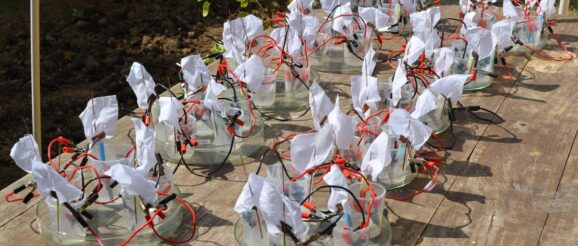Tripura engineer generates power from wet cloth, wins innovation award | North East India News,The Indian Express

A Tripura-based engineer developed a technology to power medical diagnostic kits and mobile phones by generating electrical power from a wet cloth. And the innovation won him the coveted Gandhian Young Technological Innovation (GYTI) award, which was presented by Union Minister Dr Harsh Vardhan earlier this month.
Shankha Subhra Das, who is from Khedabari, a small village bordering Bangladesh in Sipahijala district, developed a device that relies on capillary action and water evaporation. Das used a piece of cloth cut to specific dimensions to insert it into a plastic straw that is vertically fixed in a partially filled water container. Copper electrodes are attached to both ends of the straw to collect the voltage. When the liquid reaches to the top, due to capillary action, around 700 milli-volts are registered in the voltmeter.
“Here we have used centimeter-sized simple wet fabric pieces or fabric channels for electrical power generation by deploying the interplay of a spontaneously induced ionic motion across fabric nanopores due to capillary action and simultaneous water evaporation by drawing thermal energy from the ambient. Unlike other reported devices with similar functionalities, our arrangement does not necessitate any input mechanical energy or complex topographical structures to be embedded in the substrate,” said Das, who has a Ph.D from IIT-Kharagpur.
However, the power generated isn’t sufficient to charge electrical appliances. Das and his team solved this by connecting a series of 30-40 such devices. The cumulative apparatus generates 12 volts, sufficient to light a small LED, charge a mobile and power diagnostic devices such as hemoglobin and glucose testing kits.
Das said the innovation is part of a funded research project that explores the possibilities of powering low-power devices in remote areas. It started with the aim of developing low-weight, frugal and sustainable power sources for resource-strapped settings, he added.
A team of innovators with mechanical engineers and a sub-group of Biotech and bio-science experts are now working on achieving a compact design and integrating it with medical diagnostic devices.
